#Studio Fokstrot
Photo
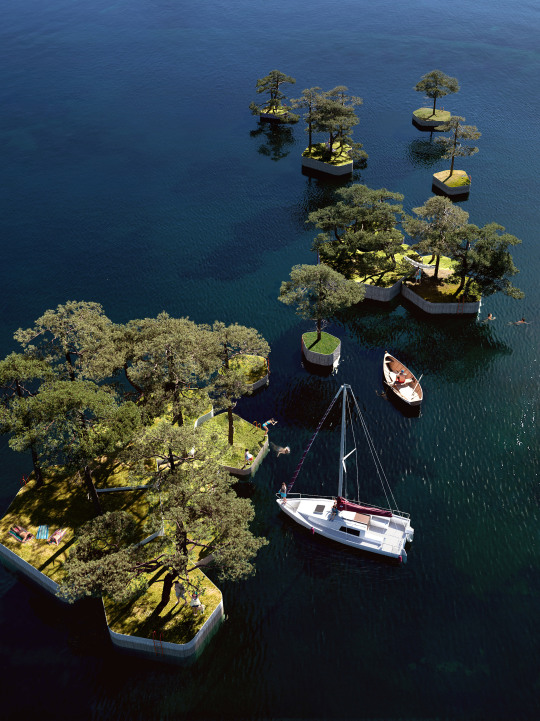
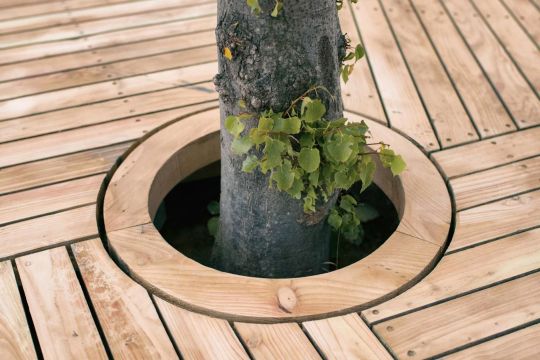
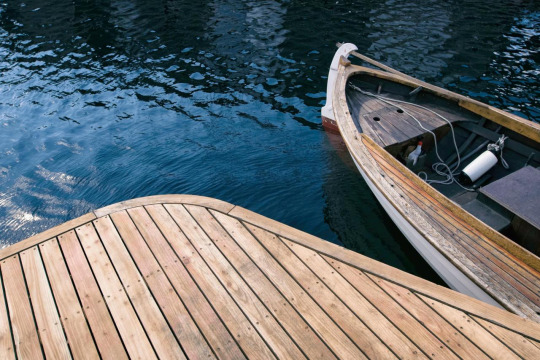
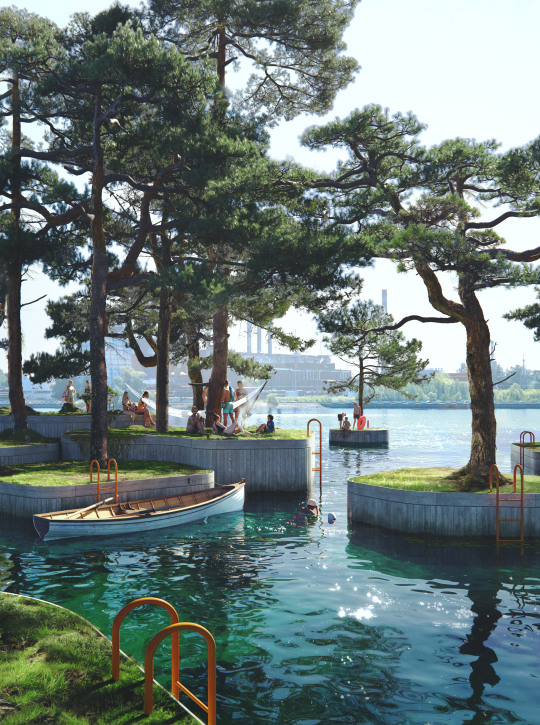


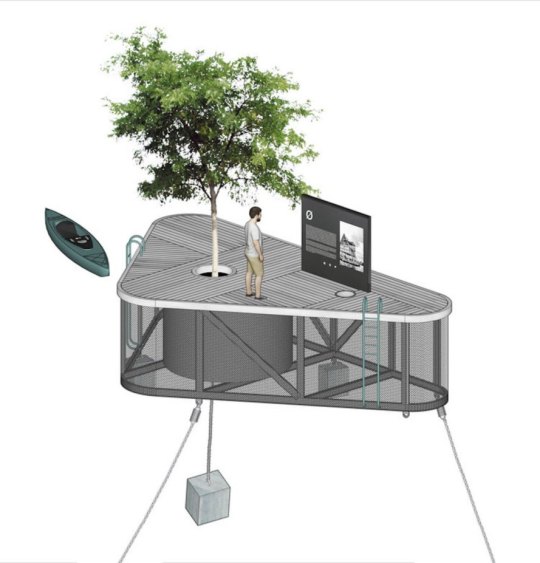

"Parkipelago", Copenhagen by Marshall Blecher and Studio Fokstrot,
All images © MIR
All drawings © Marshall Blecher and Studio Fokstrot
#art#design#Architecture#landscaping#landscape#gardens#island#floating#copenhagen#studio fokstrot#mir#marshall blecher#archipelago#nature#green#park#parkipelago
547 notes
·
View notes
Photo

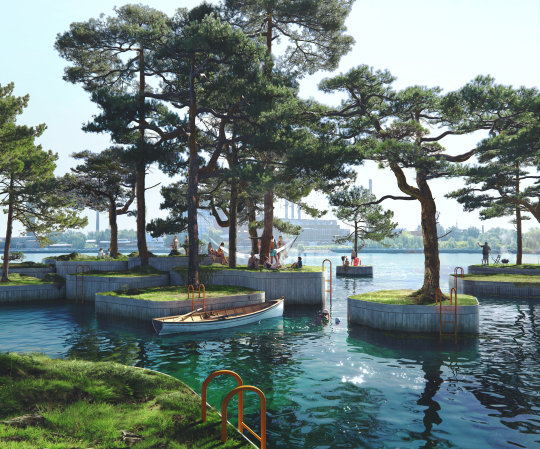



Copenhagen Islands by Marshall Blecher and Studio Fokstrot @Copenhagen, Denmark - 2020
11 notes
·
View notes
Photo
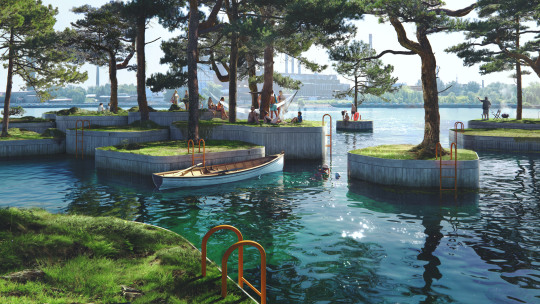
マーシャル・ブレッチャーとStudio Fokstrotが設計しているデンマーク、コペンハーゲンの港に浮かべられる人工島のイメージ画像 (dezeen)
Marshall Blecher and Studio Fokstrot to build "parkipelago" of floating islands in Copenhagen (dezeen)
8 notes
·
View notes
Photo

Copenhagen Harbor Is Home To A Beautiful Man-made Wooden Island
I want to be on that platform!
Follow us for more Tech Culture and Lifestyle Stuff.
1 note
·
View note
Link
Magnus Maarbjerg from Danish design studio Fokstrot teamed up with Australian architect Marshall Blecher a couple of years ago to create floating wooden islands for the Copenhagen harbor. They built a prototype – a 20-square-meter floating platform with a linden tree – to show how perfectly the design can be...
#Innovation#architecture#artificial island#Australian architect#cluster#cluster of artificial floating island parks#cluster of floating islands#Copenhagen#Copenhagen harbor#Copenhagen Islands#Danish design studio#Danish harbor life#denmark#design#Dezeen#floating cluster#floating island#floating island cluster#floating island park#floating island parks#floating islands#floating park#floating parks#floating platforms#floating wooden islands#Fokstrot#harbor city#island parks#Magnus Maarbjerg#Marshall Blecher
30 notes
·
View notes
Photo


(via Marshall Blecher and Studio Fokstrot build Copenhagen Islands)
30 notes
·
View notes
Text




Marshall Blecher & Studio Fokstrot - “wilderness and whimsy” Copenhagen.
3 notes
·
View notes
Photo

Marshall Blecher And Studio Fokstrot | “Parkipelago” Of Floating Islands via /r/ArchitecturePorn https://www.reddit.com/r/ArchitecturePorn/comments/ha3rvg/marshall_blecher_and_studio_fokstrot_parkipelago/?utm_source=ifttt
1 note
·
View note
Text
Nel porto della capitale danese arrivano le "Copenhagen Islands"
Il progetto delle #CopenhagenIslands a completa disposizione dei cittadini danese. Sarà adattabile anche in #Italia?
A partire da questo inverno una piccola imbarcazione in legno ha iniziato ad invadere le acque del porto della capitale danese. La piattaforma CPH – Ø1 è ovviamente ancora un prototipo in fase di sperimentazione ed appartiene ad un più ampio progetto architettonico dal nome Copehagen Islands. Promotori dell’opera sono Marshall Blecher e Magnus Maarbjerg, due designer appartenenti allo studio…
View On WordPress
0 notes
Text
Villa Korup is a weathering steel-clad home on the Danish island of Fyn
Jan Henrik Jansen Arkitekter and Marshall Blecher have created a family home on the Danish island of Fyn made entirely from cross-laminated timber that has been clad in weathering steel.
Built for a family of six who lost their previous home in a fire, Villa Korup was designed as three connected volumes that each opens up to a different part of the surrounding landscape.
The house has three distinct but interconnected volumes. Photos by Marshall Blecher
The home's main living spaces are clustered around the centre of the house, with the kitchen, living room and dining room each occupying the base of one of the three wings.
Two of the wings extending from this central cluster contain bedrooms and offices with large windows to take advantage of views of the forested site, while the third contains a double garage and utility spaces.
Between the wings are three courtyard-like terraces that have wooden decking.
Weathering steel screens protect the timber. Photo is by Hampus Berndtson
The studios constructed the villa from cross-laminated timber (CLT), made from Baltic fir, because of its ecological and aesthetic credentials.
Throughout the interior, the CLT panels are exposed and treated with soap and lye to lighten and protect the wood.
CLT is exposed throughout the interior
"CLT is a sustainable product and it creates a great interior environment and a feeling of solidity that is missing from timber-framed houses," Marshall Blecher studio founder Marshall Blecher told Dezeen.
"Using CLT allowed us to design the house with millimetre precision and know that we would have a sharp interior finish and a precise structure to add to."
Lye-washed timber creates a light interior
The weathering-steel cladding, which was custom-made for Villa Korup, was designed to help the building blend in with its surroundings.
"The weathering steel skin protects the building from the elements and allows it to settle into the landscape," Blecher said.
"The panels react to the site's conditions and develop over time, starting out with an oily grey metallic finish, gradually streaking with orange fading into a mottled brown and eventually settling into a deep, earthy umber."
The facade has no visible screws. Photo is by Hampus Berndtson
The studios worked with a local blacksmith to develop a system that allows the steel screens to hang off the facade, negating the need for them to be fixed in place using screws.
"We visited a number of other Corten projects when designing the house and saw that most used painted stainless steel screws to fix cladding into place," Blecher explained.
"We wanted to avoid having these visible screw heads and the denting and uneven weathering which the screws cause."
Wooden terraces function as social spaces
As well as choosing CLT for the facade because it is a more sustainable product, the studio designed the house with a ground source heat pump, which generates less CO2 than conventional heating.
"The house is highly insulated and includes a ground source heat pump for efficient and sustainable temperature regulation," Blecher added.
The house was built for a family of six
Danish-German architect Jan Henrik Jansen has designed a number of CLT houses together with Marshall Blecher. The studio previously created a Danish holiday home formed by overlapping cylindrical and log-covered blocks.
Marshall Blecher recently unveiled its vision for a "parkipelago" of floating islands in Copenhagen, which it created together with Studio Fokstrot.
Photography is by Gabrielle Gualdi unless stated otherwise.
The post Villa Korup is a weathering steel-clad home on the Danish island of Fyn appeared first on Dezeen.
0 notes
Photo



“Parkipelago CPHØ1” by Design studio Fokstrot, Copenhagen
#art#design#architecture#island#wood#woodworking#floating#Copenhagen#nature#freedom#fun#fokstrot#marshall blecher#magnus maarbjerg#CPHO1#sea#harbour#entertainment#playground#tree#park#pelago
2K notes
·
View notes
Video
youtube
Upoznajte somborsku "Huči kuči bandu"
Džokeji puni burbona
"Banda" je zabeležila još jedan sjajan nastup u klubu "Fokstrot"! U tekstu koji sledi "samo će se kasti" da li ovaj bend može da postigne i nešto više.
Huči kuči banda okupila se u novembru 1998. godine u Somboru. Ozbiljno, autorski ("iz stomaka") počeli su da rade posle bombardovanja. Obišli su vojvođanske gradove i sela, a najčešće su svirali u klubu Modžo u Senti i u novosadskom Fokstrotu. Beograd i "južnu prugu" još nisu "overili".
– Reč "banda" ima veze s nekom vojvođanskom tradicijom, jer nekada su postojale ekipe koje su svirale starogradsku muziku po Vojvodini, a mi, kao, pokušavamo da budemo na njihovom tragu. Dugo smo svirali bluzerske standarde i voleli smo Hukera i Votersa. Izraz "huči kuči" kod njih se često pojavljivao. Taj izraz blizak je rečima "foksi lejdi", ili što bi kod nas rekli: radodajka! – eksplicitan je Vladimir Čutura, gitarista Huči kuči bande, koji ne propušta da konstatuje kako je Tom Vejts "veliki beli mag bluza".
Pevač Dalibor Stojanović, čini se, Vejtsa voli još više. Ali i Zvonka Bogdana, pogotovo njegovu romansu-za-sva-vremena "Oči zelene". U subotu, u klubu Fokstrot, dotični biser Banda je odsvirala – hajde malo da preterujemo! – kao da je godinama pratila Toma Vejtsa na nekoj imaginarnoj turneji po severnobačkim salašima.
– To je prava romansa, te "Oči zelene", a romanse su za mene uvek bile inspirativne. Naravno, kao bend, ne opterećujemo se stilovima, već nam je bitna inspiracija koju donosi neka melodija ili tekst. Recimo, oduševili smo se tekstom jedne Zmaj Jovine dečje pesme, a obradili smo i poznatu "Fifi" Dragana Lukića. Neki naši tekstovi su u stilu haiku poezije, minimalistički su, a neki su, jednostavno, pozajmljeni i prepevani – analizira Dalibor Stojanović sve ono što peva na koncertima Huči kuči bande. Ali i na njihovom prvom CD-u, koji se zove "Vratite mi devojku, konjokradice".
– Naš prvi CD snimili smo u decembru prošle godine u restoranu "Vojvodina" u Somboru. Bukvalno, prebacili smo jedan studio u kafanu i tu smo tri dana snimali i zabavljali se s našim prijateljima i gostima. Inače, trenutno pripremamo drugi video spot sa ovog CD-a i tražimo izdavača koji će objaviti naše nove pesme – referiše Oskar Kekezović, bubnjar i "čovek za kontakte" (025/24-738) kada je u pitanju somborska Banda.
Pored trojice citiranih u Huči kuči bandi sviraju basista Zoran Grbić, klavijaturista Rafael Juhas i Zvonko Gorečan koji startuje pripremljene semplove sa računara i svira flašofon. Zvonko je tu, kaže, "u cilju modernizacije" i njegovo je da flaše sa raznobojnim tečnostima ("poređane po notama") zazvone baš kad treba. Uz milozvučje tikvofona.
– Istražujući šta bi to mogli da budu pravi vojvođanski instrumenti, došli smo do tikvofona. Na njih smo stavili piskove od truba, pošto jako poštujemo trubu kao instrument, tako da sada na jednom tikvofonu imamo pentatonsku skalu, dok ovaj drugi zvuči, recimo, kao tuba. Kad budemo imali više vremena, izmislićemo još koji instrument – obećava gitarista Vladimir. I svima koji kažu da je muzika Huči kuči bande u fazonu Toma Vejtsa – duboko se zahvaljuje na komplimentu.
Nema na čemu. I drugi put. Recimo, u Studiju M...
Lokalne atrakcije
– U "šumi" uticaja kojima smo godinama izloženi – rabimo sve! I rege, i ska, i bluz. Ma, sve čega se latimo, a naše autorstvo se, nadam se, uz sve to nekako uklapa – skroman je pevač Dalibor (Vejts). Sviračko iskustvo koje stoji iza ljudi iz Huči kuči bande nije skromno. Jer, nekada su svirali u lokalnim atrakcijama kao što su: Fentestik kiseli bend, Lamanš, Zilđans, Doksi bend...
0 notes
Photo




A public space that floats in the Copenhagen harbor.
Architects Magnus Maarbjerg of Danish design studio Fokstrot and Copenhagen-based Australian Marshall Blecher have completed the first phase of their ambitious project which re-imagines public parks in a creative way. Copenhagen Islands brings a new range of public spaces into the city’s harbor area. The project aims to create a sequence of wooden platforms brought together in a mobile, floating “Parkipelago.”
https://www.gessato.com/copenhagen-islands-project/
1 note
·
View note
Photo

Australian architect Marshall Blecher and Magnus Maarbjerg from design studio Fokstrot, have created CPHØ1, a prototype floating island which will move around Copenhagen harbor.The Island, which is free to anyone to use, will move around the harbor over the next year, and can be used for fishing, barbecues, camping, and swimming. It will also host small events at different locations.
1 note
·
View note
Photo

Si chiama Parkipelago ed è l’incredibile parco di isole galleggianti che sarà presto aperto a cittadini e turisti, gratuitamente. Siamo a Copenaghen, la capitale danese eletta città più smart del mondo, attenta da sempre alle tematiche green e al benessere della popolazione locale e non solo. Il territorio è ricco di storia e bellezze paesaggistiche che convivono con progetti audaci e futuristici creati sempre nel pieno rispetto della natura. Parkipelago, il progetto – Fonte Marshall Blecher e Studio Fokstrot È questo sicuramente il caso di Parkipelago, un progetto che vede la realizzazione di un parco formato da isole galleggianti, mobili e gratuite. Si tratta in assoluto di un nuovo archetipo nello spazio urbano del porto della città, un luogo a portata di tutti, pensato per il benessere dei cittadini. Le isole potranno essere utilizzate per pescare, guardare le stelle, fare un picnic o semplicemente per godersi la natura e un po’ di relax all’aria aperta, circondati dal nulla. Il parco sarà raggiungibile in barca, in kayak oppure a nuoto. Ogni isola che compone il parco presenterà degli elementi naturali imprescindibili come piante endemiche, alberi, erbe e cespugli, ma non è tutto. Sotto la piattaforma infatti, verranno create le condizioni per far nascere gli habitat ideali per la crescita e lo sviluppo di alghe, molluschi e pesci. Parkipelago, il progetto – Fonte Marshall Blecher e Studio Fokstrot Le isole galleggianti sono a tutti gli effetti uno spazio verde, insolito e incredibile, in continua evoluzione in centro città. Il progetto è nato infatti con la volontà di creare uno spazio urbanistico flessibile e resistente al clima, per questo i materiali utilizzati sono sostenibili e riciclati. Le isole che compongono il parco galleggiante, saranno costruite a mano nei cantieri navali del porto Copenaghen e la tecnica sarà la stessa utilizzata per la realizzazione delle imbarcazioni in legno. Parkipelago è stato concepito per essere smart e green, le isole saranno spostate stagionalmente per catalizzare nuove attività in luoghi da sviluppare o zone da valorizzare. Il parco è inoltre in continua espansione, nei prossimi anni infatti si aggiungeranno altre isole. Il progetto, a cura dell’architetto australiano Marshall Blecher in collaborazione con lo studio di design Fokstrot, si è aggiudicato diversi premi, tra questi il Taipei international Design Awards for public Space e l’Award for social design. Parkipelago, il progetto – Fonte Marshall Blecher e Studio Fokstrot Foto su gentile concessione di: Marshall Blecher Studio Fokstrot https://ift.tt/3dq1OMZ Mobili, galleggianti e gratuiti: i nuovi parchi di Copenaghen Si chiama Parkipelago ed è l’incredibile parco di isole galleggianti che sarà presto aperto a cittadini e turisti, gratuitamente. Siamo a Copenaghen, la capitale danese eletta città più smart del mondo, attenta da sempre alle tematiche green e al benessere della popolazione locale e non solo. Il territorio è ricco di storia e bellezze paesaggistiche che convivono con progetti audaci e futuristici creati sempre nel pieno rispetto della natura. Parkipelago, il progetto – Fonte Marshall Blecher e Studio Fokstrot È questo sicuramente il caso di Parkipelago, un progetto che vede la realizzazione di un parco formato da isole galleggianti, mobili e gratuite. Si tratta in assoluto di un nuovo archetipo nello spazio urbano del porto della città, un luogo a portata di tutti, pensato per il benessere dei cittadini. Le isole potranno essere utilizzate per pescare, guardare le stelle, fare un picnic o semplicemente per godersi la natura e un po’ di relax all’aria aperta, circondati dal nulla. Il parco sarà raggiungibile in barca, in kayak oppure a nuoto. Ogni isola che compone il parco presenterà degli elementi naturali imprescindibili come piante endemiche, alberi, erbe e cespugli, ma non è tutto. Sotto la piattaforma infatti, verranno create le condizioni per far nascere gli habitat ideali per la crescita e lo sviluppo di alghe, molluschi e pesci. Parkipelago, il progetto – Fonte Marshall Blecher e Studio Fokstrot Le isole galleggianti sono a tutti gli effetti uno spazio verde, insolito e incredibile, in continua evoluzione in centro città. Il progetto è nato infatti con la volontà di creare uno spazio urbanistico flessibile e resistente al clima, per questo i materiali utilizzati sono sostenibili e riciclati. Le isole che compongono il parco galleggiante, saranno costruite a mano nei cantieri navali del porto Copenaghen e la tecnica sarà la stessa utilizzata per la realizzazione delle imbarcazioni in legno. Parkipelago è stato concepito per essere smart e green, le isole saranno spostate stagionalmente per catalizzare nuove attività in luoghi da sviluppare o zone da valorizzare. Il parco è inoltre in continua espansione, nei prossimi anni infatti si aggiungeranno altre isole. Il progetto, a cura dell’architetto australiano Marshall Blecher in collaborazione con lo studio di design Fokstrot, si è aggiudicato diversi premi, tra questi il Taipei international Design Awards for public Space e l’Award for social design. Parkipelago, il progetto – Fonte Marshall Blecher e Studio Fokstrot Foto su gentile concessione di: Marshall Blecher Studio Fokstrot Un parco di isole galleggianti, green e sostenibile, arriva a Copenaghen. Il suo nome è Parkipelago e si prepara ad essere un’innovazione urbana assoluta.
0 notes
Text
Arquiteto australiano Marshall Blecher desenha parques em ilhas artificiais para porto de Copenhague
As ilhas serão ancoradas no solo do porto, e serão feitas com elementos reciclados
FOTOS: DIVULGAÇÃO / MIR

O arquiteto australiano Marshall Blecher e o estúdio dinamarquês Studio Fokstrot planejam construir parques bem diferentes: o projeto prevê a construção de um grupo de ilhas artificiais no porto de Copenhague, que terão foco em sustentabilidade e servirão como um espaço para relaxar, fazer…
View On WordPress
0 notes